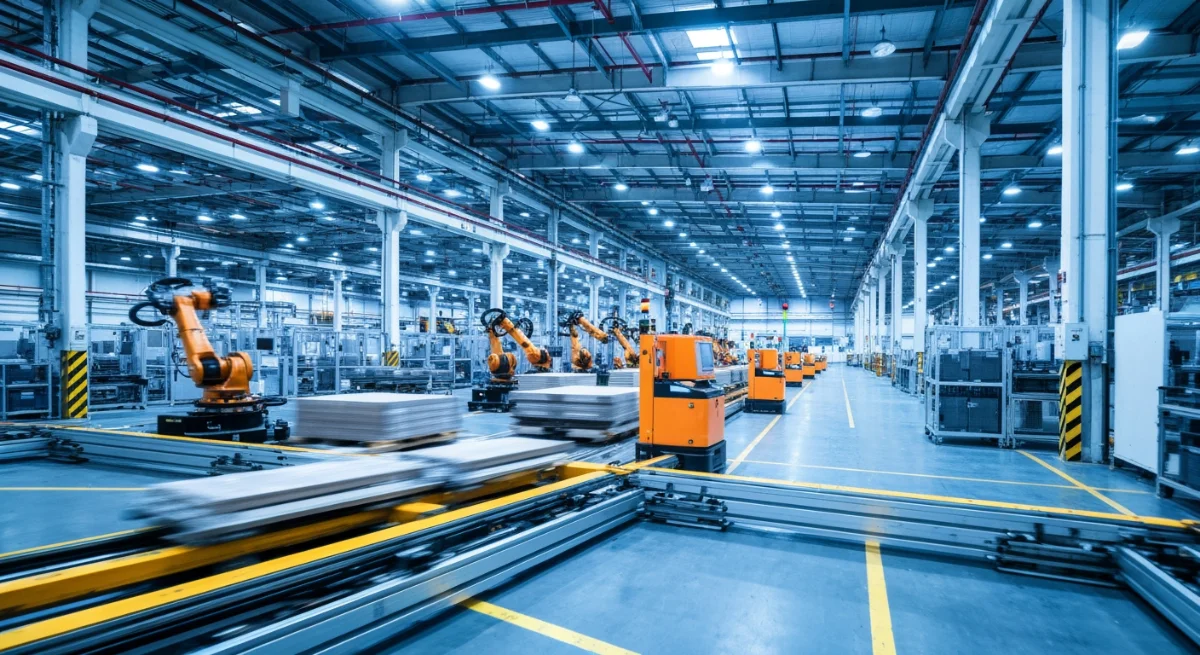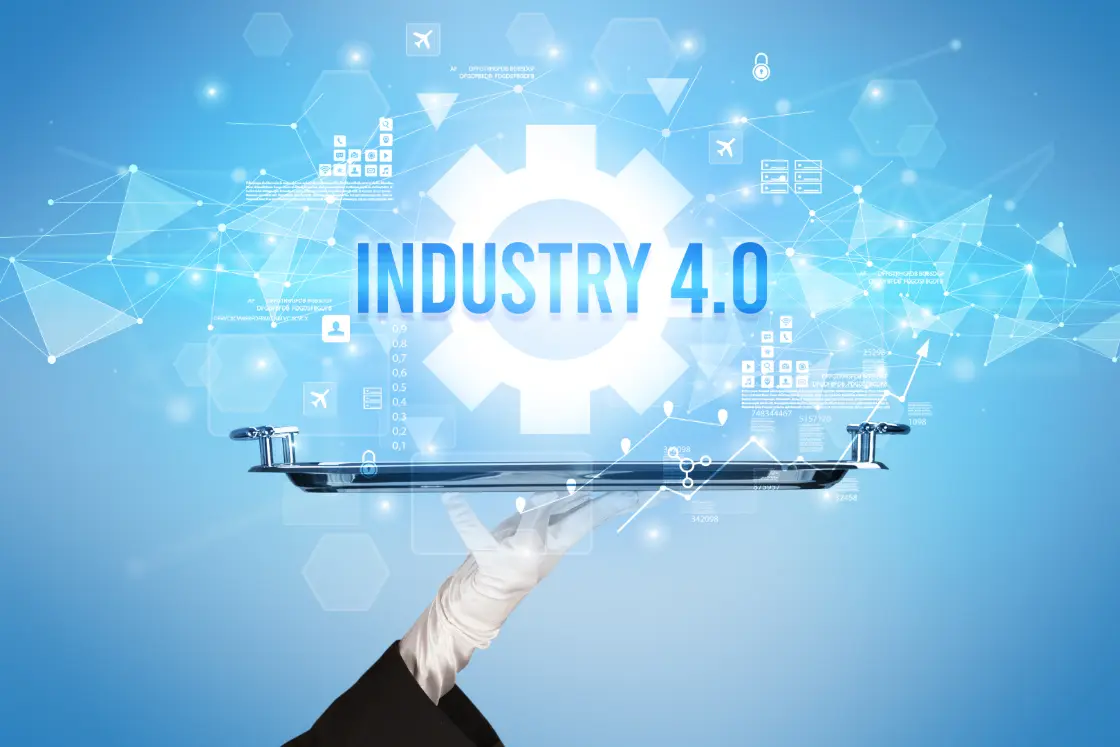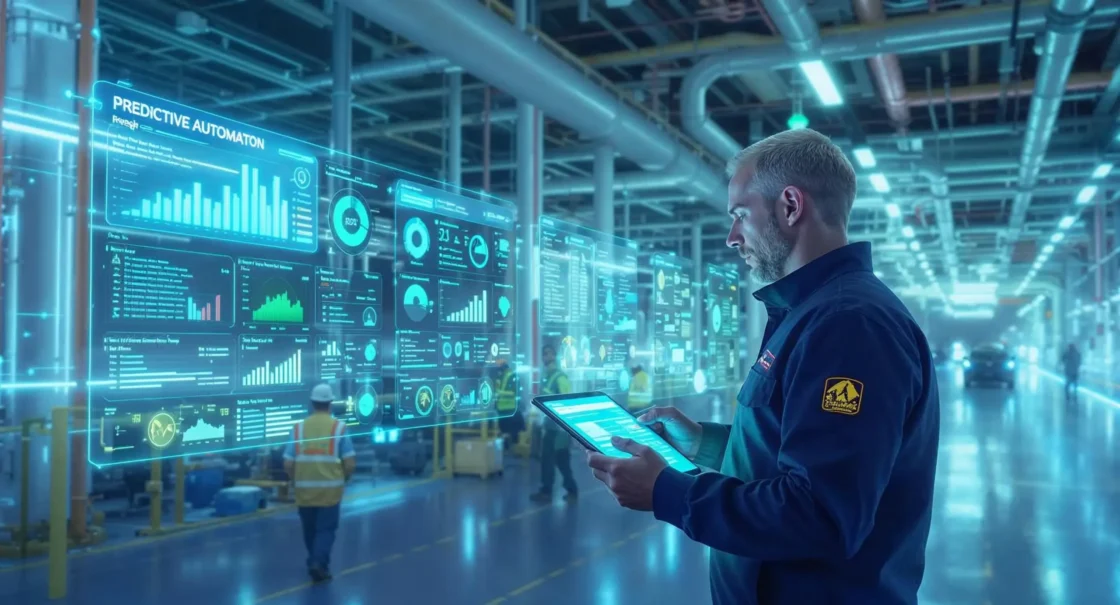As we close the chapter on 2025, it’s clear this has been a watershed year for industrial automation—a year where artificial intelligence moved from buzzword to business-critical tool, where robots learned to think and adapt, and where the convergence of technologies fundamentally transformed manufacturing floors worldwide. The industry didn’t just evolve; it accelerated into a new era of intelligent, adaptive, and interconnected systems that are redefining what’s possible in modern manufacturing.
The AI Revolution Takes Center Stage
If 2025 could be summarized in one phrase, it would be “AI-powered everything.” Artificial intelligence ceased being a experimental technology and became the backbone of industrial operations across sectors. Unlike previous years where AI applications were limited to specific use cases, 2025 witnessed AI integration at every level—from predictive maintenance to quality control, from supply chain optimization to autonomous decision-making.
The statistics tell a compelling story: 63% of organizations committed to adopting AI within the next three years, driving more than 120% year-over-year market growth. But beyond the numbers, the real transformation came in how AI fundamentally changed what machines could do. Emerson launched its Guardian Digital Platform with an AI-powered virtual advisor that provides direct answers, health scoring, and predictive maintenance guidance. ABB integrated AI assistance directly into its RobotStudio simulation software, democratizing robot programming for users of all skill levels and slashing development time.
Advanced process control and control system optimization emerged as the most significant technologies impacting workforce productivity, with AI-driven predictive models enabling real-time decision-making and autonomous workflows. The shift from rule-based automation to training-based robotics marked a fundamental paradigm shift—machines that could learn, adapt, and improve without explicit reprogramming.
Robotics Redefined: Smarter, Stronger, More Collaborative
The robotics landscape in 2025 defied expectations, with innovation happening faster than even optimistic forecasts predicted. Physical AI—the fusion of artificial intelligence with physical robotics—emerged as a transformative force. Early adopters like Amazon and Foxconn demonstrated tangible results: digital twin simulations cut deployment times by 40%, AI-powered robots improved cycle times by 20-30%, and error rates dropped by 25%.
Major industry players made bold moves to secure their positions in this evolving market. SoftBank Group’s $5.375 billion acquisition of ABB’s Robotics division sent shockwaves through the industry, signaling massive confidence in the sector’s future. Meanwhile, Yaskawa and FANUC announced significant investments in new U.S. production facilities to expand robot manufacturing capacity and strengthen supply chains.
The year also saw remarkable innovation in collaborative robotics. Universal Robots debuted the UR8 Long at Fabtech 2025, featuring an impressive 1,750mm reach in a compact build. KUKA Robotics pushed the boundaries of flexible automation with modular systems designed for high-mix, low-volume production—addressing one of manufacturing’s most persistent challenges. These weren’t just incremental improvements; they represented fundamental rethinking of how robots and humans could work together safely and efficiently.
Specialized applications flourished as well. HIWIN introduced precision welding robot systems combining long-term durability with ease of operation. Google DeepMind and Intrinsic unveiled RoboBallet, using AI to generate collision-free robot motion plans in seconds—a process that previously took weeks of manual coding. The technology democratized advanced robotics, making sophisticated motion planning accessible to smaller manufacturers.
Hardware Innovation: Power, Precision, and Performance
While AI and robotics captured headlines, 2025 was equally remarkable for hardware innovations that pushed the boundaries of what industrial equipment could achieve. Emerson launched next-generation PACSystems industrial PCs featuring 13th Generation Intel Core processors specifically optimized for AI-powered automation workloads. These weren’t minor upgrades but fundamental reimagining of industrial computing architecture.
Motion control saw dramatic advances. B&R introduced its ACOPOS P3 servo drive series with higher power density, faster control loops, and up to 50% cabinet space savings—addressing the perpetual challenge of fitting more capability into limited space. Kollmorgen launched its Essentials motion-control system, cleverly combining servo motor, servo drive, and a single power/data cable to simplify installation and reduce total cost.
Sensing and vision systems evolved rapidly. SICK revealed the Visionary AI-Assist sensor, combining rugged 3D imaging with AI analytics to prevent collisions in extreme industrial environments. Wenglor introduced “AI Lab,” a cloud-based platform integrated with its weHub and uniVision 3 for training and deploying AI vision models. Banner Engineering expanded its portfolio with wireless 3-axis vibration sensors for predictive maintenance and field-wireable CAT 6A connectors with IP67 housings.
Power management, often overlooked but absolutely critical, received significant attention. ABB invested $110 million to scale Emax 3 circuit breaker production supporting growing energy and data center demands. Phoenix Contact launched compact EMC filters that double as over-current protection devices for high-interference environments, while Carlo Gavazzi introduced ATEX-compliant relay series for hazardous areas.
Connectivity and Edge Computing: The Nervous System of Smart Factories
The proliferation of Industrial Internet of Things (IIoT) and edge computing created the connective tissue that allowed all these advanced systems to work together seamlessly. Enterprise IoT is now forecasted to account for 72% of market revenue by 2028, up from 70% in 2023, reflecting rapid investment in smarter, connected technologies.
Private 5G networks emerged as game-changers for manufacturers, offering exceptional security through advanced encryption protocols, the ability to maintain connections among thousands of sensors simultaneously, and optimized production processes that cut downtime and increase throughput. The technology finally delivered on the promise of truly connected factories where machines, sensors, and control systems communicate in real-time without network bottlenecks.
Phoenix Contact’s NearFi technology exemplified innovation in connectivity, delivering wear-resistant power and data transmission for rotating systems and automated guided vehicles (AGVs). Wago released cost-effective 16-port Ethernet switches and industrial media converters for automation upgrades, while Belden expanded its connectivity portfolio with Ethernet extension capabilities and the IAF-240 OT firewall for enhanced cybersecurity.
Trade Shows: Where Innovation Met Reality
Major industry events in 2025 served as crucial launchpads for new technologies and collaboration opportunities. Automate 2025 in Detroit (May 12-15) brought together the industry’s leading robotics, vision, and control technology companies. Exhibitors showcased breakthrough technologies including Opto 22’s Groov Epic edge programmable industrial controller, which merged traditional machine control with modern software-defined architectures and IoT capabilities.
PACK EXPO Las Vegas demonstrated the packaging industry’s rapid automation adoption. Yaskawa Motoman showcased AI-enabled inspection, sorting, and palletizing capabilities, while Camozzi Automation demonstrated pneumatic, electric, and IIoT-ready systems spanning the full automation spectrum. These weren’t just product demonstrations—they were glimpses into the immediate future of manufacturing.
Workforce Transformation: Humans and Machines, Redefined
Perhaps the most significant—and most challenging—aspect of 2025’s automation revolution was its impact on the workforce. The World Economic Forum’s Future of Jobs 2025 report identified robotics and autonomous systems as major sources of job displacement, but emphasized this represented transition rather than simple elimination. The data showed 44% of companies highlighted creation of high-skill roles, while 35% emphasized the need for remote monitoring capabilities.
Traditional roles evolved dramatically. Machine operators became robot technicians. Logistics teams transitioned to coordinating mobile robot fleets. Maintenance personnel shifted to predictive maintenance specialists. Manufacturing engineers focused on training and optimizing AI and robotic systems. The transformation freed workers from repetitive, dangerous tasks while creating opportunities for more meaningful, skilled work.
Educational institutions responded rapidly to these workforce needs. New robotics education centers like the University of Maine’s B.O.T. Loft equipped students with practical automation skills for advanced manufacturing. PMMI’s PACK Challenge entered its third year, introducing high school students to packaging industry automation, design, and business practices—developing the next generation of automation professionals.
Cybersecurity: Protecting the Connected Factory
As factories became more connected and intelligent, they also became more vulnerable. Manufacturing became the second most targeted industry globally, experiencing exponential increases in cyberattacks. The industry responded with sophisticated AI-embedded cybersecurity systems capable of detecting anomalies, predicting potential breaches, and responding to incidents faster than ever possible with human oversight alone.
The challenge was significant: every new connected sensor, every AI-powered controller, every cloud-integrated system represented a potential entry point for cyber threats. Solutions emerged through both hardware and software innovation. Belden’s expanded cybersecurity portfolio included dedicated OT firewalls, while software platforms incorporated advanced encryption protocols and network slicing to protect critical industrial infrastructure.
Sustainability and Efficiency: Doing More With Less
Environmental considerations moved from peripheral concern to central strategy in 2025. Phoenix Contact, Siemens, and Neura Robotics formed strategic partnerships specifically focused on waste reduction and sustainable manufacturing. Oriental Motor introduced IE5-efficient 750W brushless DC motors that dramatically reduced energy consumption while maintaining performance.
The Recirculate project exemplified innovation at the intersection of automation and sustainability, deploying AI and robotics to disassemble electric vehicle batteries for efficient recycling. These weren’t feel-good initiatives—they were recognition that sustainable operations delivered both environmental and economic benefits through reduced energy costs, minimized waste, and optimized resource utilization.
Looking Ahead: The Foundation Is Set
As 2025 draws to a close, the industrial automation industry stands at an inflection point. The foundational technologies are mature and proven. AI has moved from experimental to essential. Robots have evolved from single-purpose machines to adaptive, collaborative partners. Connectivity and edge computing have created the infrastructure for truly intelligent operations.
The year’s investments tell the story clearly: 52% of companies prioritized foundational technologies like sensors and control systems, seeking operational reliability and real-time data insights. Hyperautomation—combining AI, machine learning, and robotic process automation under unified strategies—gained traction for its potential to streamline operations end-to-end.
The robotics revolution that analysts predicted years ago has not only arrived but exceeded expectations in speed, complexity, and impact. The question is no longer whether to automate, but how quickly companies can implement intelligent automation to remain competitive. For manufacturers willing to embrace this transformation—investing in technology, developing their workforce, and reimagining their operations—2025 has proven that the future of industrial automation is already here.
The stage is set for even more remarkable advances in the years ahead, built on the solid foundation established this year. Industrial automation in 2025 will be remembered as the year intelligence truly became industrial—and the year the factory of the future became the factory of today.








